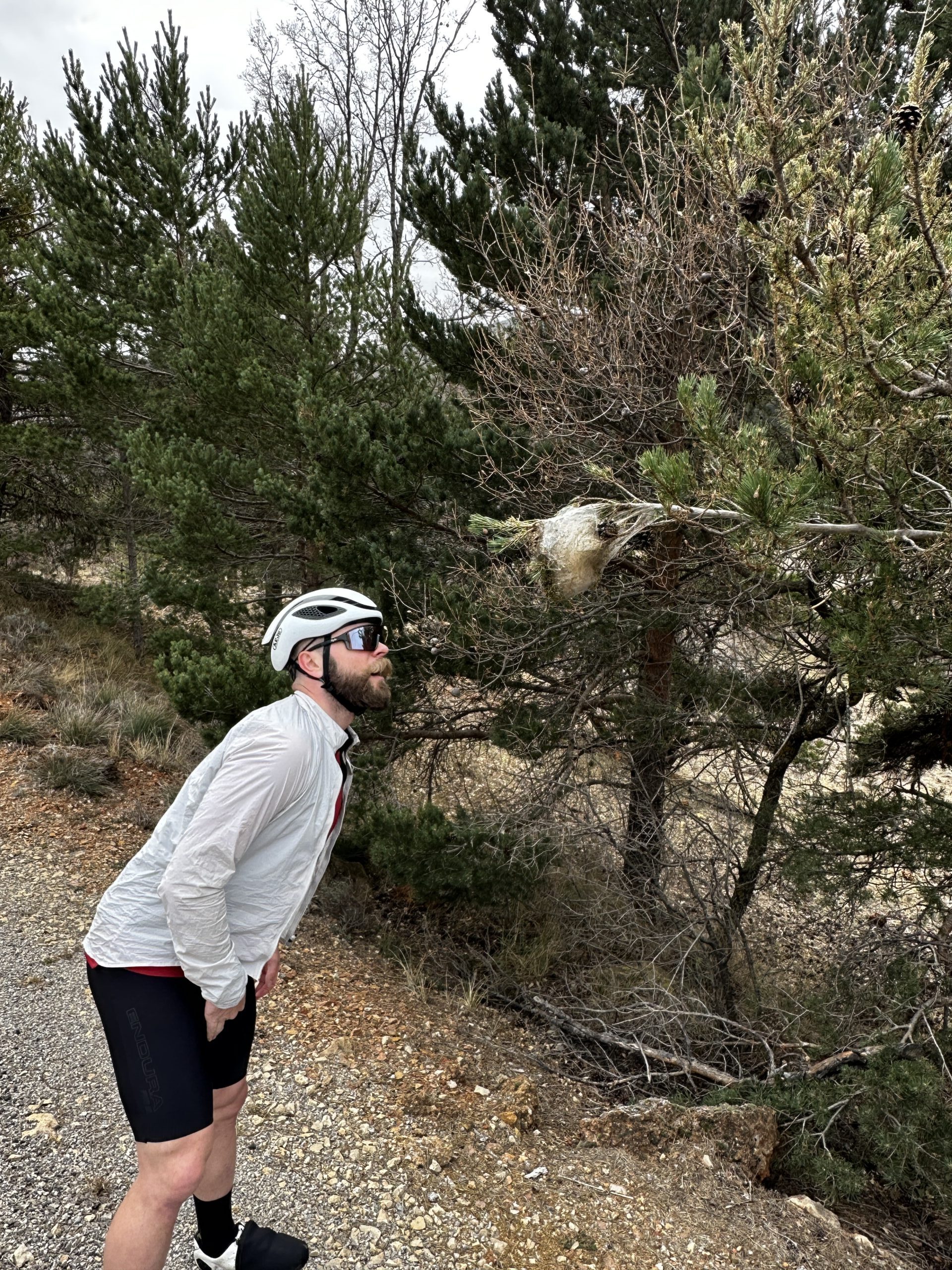Toxic hairy caterpillars have been found in Derbyshire – don’t be tempted to give them too close an inspection.
The Oak Processionary Moth may be familiar to riders who have been to Spain or France, where they’re a common sight and something of a menace at certain times of year. Their hairy spines are incredibly irritating to skin and throat, causing rashes and infections. Our Amanda and Rhys found that after riding through them in Spain (there were so many it was impossible to avoid them), even by washing a bike afterwards resulted in nasty irritated hands.

A Government notice issued states:
Oak processionary moth (OPM) is native to southern Europe and is an insect pest of oak trees. It was first detected in London in 2006 and has since established in London and some surrounding counties, with the rest of the country designated a Pest Free Area. OPM poses a threat to oak trees and humans. Its caterpillars feed on the leaves of several species of oak trees, causing them to lose their leaves and negatively impact their growth. It can cause itchy rashes and eye and throat infections when touched by members of the public.
Since 2012, the Government has had a programme in place to minimise the size, spread and impact of OPM. Over the last five years, £10 million has been invested into oak health, including the management of oak processionary moth, as well as research to develop novel control techniques and new policy responses. The programme has been adapted over time to account for emerging evidence and surveillance data and we have strengthened legislation to protect oak trees against OPM through movement and imports, including restricting the import of high-risk oak trees into the whole of GB, unless specific conditions are met.
Government advice contains the following further information on how to remain vigilant:
- Following possible OPM contact, visit your pharmacist for relief from milder skin or eye irritations. Consult a GP or call NHS111 for more serious reactions. Contact a vet if animals are seriously affected.
- To view the zones the large oak trees you want to move are currently in, and what zone they would be moved to, you can use the Forestry Commission interactive map and search by postcode.
- Please view our Gov.uk page on Oak Processionary Moth and the Forestry Commission infographic to check the characteristics of Oak Processionary Moth. The caterpillars are likely to be visible until the end of July.
- Please view the toolkit for local authorities and larger landowners to help plan for and manage OPM which been developed by the Tree Council, in partnership with Forest Research.
You’ve been warned! Now, in a Fresh Goods Friday style, this springs to mind. Stay safe, don’t have nightmares:






